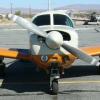New Mooney Owner in 29 Palms
-
Members Online
- TCC
- hypertech
- 00-Negative
- Bpvlbv
- N201MKTurbo
- Marc_B
- Ibra
- LP1
- M20Jon
- KSMooniac
- N177MC
- Nico1
- CalebH
- Z W
- EricJ
- 47U
- eman1200
- Ed de C.
- rbmaze
- Mufflerbearing
- moodychief
- AH-1 Cobra Pilot
- Pinecone
- bigmo
- Parker_Woodruff
- A64Pilot
- NickG
- onegreen
- kortopates
- Flyler
- Raistlin
- Markku
- Speed Brakes
- Echo
- Fritz1
- 1980Mooney
- Sabremech
- LANCECASPER


Recommended Posts
Join the conversation
You can post now and register later. If you have an account, sign in now to post with your account.